Essential accessories for your motorhome
Whether you order your new motorhome with every available optional extra or keep costs down by ordering few accessories for your new campervan, it won't be very long before you realise you need some accessories
The problem is that the more things you buy the more weight goes inside and, before long, your available payload has disappeared. Avoid that situation by focussing on the essential accessories that no motorhome should be without. Once you have these you can then fill any remaining cupboard space without worrying that you’ve missed something important.
Below are some quick links to the fifteen accessories we have showcased.
1. Second Leisure Battery
When you go off-hook up, it usually means switching to gas or diesel heating and saying goodbye to the microwave. Adding a second battery and using it in parallel gives the option of having power to last most of the week, or to use devices that drain power like TVs. Ensure both batteries are the same make, amp hour rating and if possible, the same manufacturing date. That way they will charge and age at the same rate, otherwise one may need changing before the other. The basic rating for batteries is how many hours it will produce a set amount of amps, or amp hours in other words. Leisure batteries typically come with ratings of 75, 90 and 110 AHrs, with the higher performance batteries being larger and costing more.
2. Satellite Navigation
For most a motorhome-specific sat-nav is an absolute essential. The larger the motorhome, the more difficult it is to turn round if you go the wrong way somewhere. On top of that, some roads can be perilously narrow or have low bridges, and you do not want to be in the position of having to reverse back out of a road that becomes too small to navigate. Far better to be able to specify your vehicle dimensions and set the navigation to avoid roads that are too small.
For trips to the continent a sat-nav with European coverage is essential but if you’re going outside the EU, then read up on the device you have in mind because full European coverage may not actually extend to Eastern European countries. Sat-navs which come with built-in campsites for motorhomes are particularly useful.
3. Television
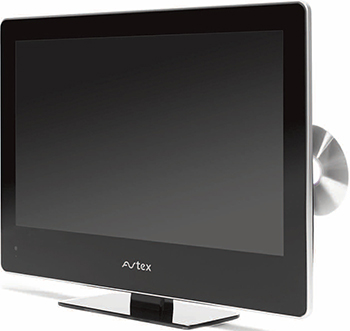 If you want to be entertained in your motorhome on an evening then you’ll need a flat screen TV. A 12V one will run off the leisure battery but will be limited in size, though you can get up to a 22inch set. If you want something bigger then it will need to run off 240V hook-up but then you need to be aware of the weight. Modern TVs are getting lighter all the time and LCD models are the lightest of the lot.
If you want to be entertained in your motorhome on an evening then you’ll need a flat screen TV. A 12V one will run off the leisure battery but will be limited in size, though you can get up to a 22inch set. If you want something bigger then it will need to run off 240V hook-up but then you need to be aware of the weight. Modern TVs are getting lighter all the time and LCD models are the lightest of the lot.
Some motorhomes come with retractable holders for a TV and it can be supplied fitted. When adding your own you may need a bracket to mount it on, which, again, adds to the weight.
4. Satellite Dish
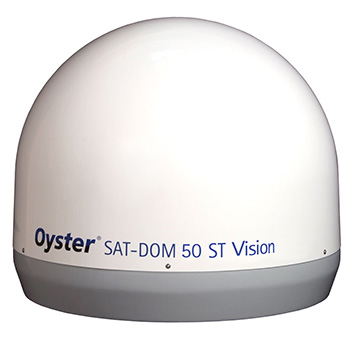 For watching free-to-air satellite tv channels you can get a variety of decoding boxes but for Sky TV you’ll need an official box – either your one from home or you can pick up spare ones on eBay very cheaply – but note that Sky boxes only run on 240V. There are two types of dish – self-seeking or automatic ones which scan the sky and lock onto the satellite in under 30seconds, or manual ones where you will be shouting down to your other half, “can you see anything yet.” The automatic dishes are far better, but cost considerably more. They come in either a dome that is weather and wind-proof, or use a folding up mechanism. For actual dish size, 60cm is fine for the UK and northern Europe, but not southern Europe, whereas an 80cm dish will keep you picking up the Sky TV signal all the way down to Barcelona. To help decide what kind of system you might need, try out this motorhome satellite guide
For watching free-to-air satellite tv channels you can get a variety of decoding boxes but for Sky TV you’ll need an official box – either your one from home or you can pick up spare ones on eBay very cheaply – but note that Sky boxes only run on 240V. There are two types of dish – self-seeking or automatic ones which scan the sky and lock onto the satellite in under 30seconds, or manual ones where you will be shouting down to your other half, “can you see anything yet.” The automatic dishes are far better, but cost considerably more. They come in either a dome that is weather and wind-proof, or use a folding up mechanism. For actual dish size, 60cm is fine for the UK and northern Europe, but not southern Europe, whereas an 80cm dish will keep you picking up the Sky TV signal all the way down to Barcelona. To help decide what kind of system you might need, try out this motorhome satellite guide
5. Dashcam
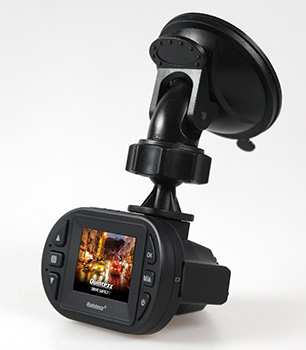 Not just for recording your trips, but as a major insurance tool.Things to look out for are completely automatic systems that start recording when the engine starts, or come on when the G-sensor detects an impact. It will need to have full HD resolution of 1920x1080 and you will want a 30fps frame rate in order to capture vehicles coming towards you at speed. It’s best to research these because price and quality vary with some cheaper model not coping well with moving vehicles or suffering with image quality when it gets dark.
Not just for recording your trips, but as a major insurance tool.Things to look out for are completely automatic systems that start recording when the engine starts, or come on when the G-sensor detects an impact. It will need to have full HD resolution of 1920x1080 and you will want a 30fps frame rate in order to capture vehicles coming towards you at speed. It’s best to research these because price and quality vary with some cheaper model not coping well with moving vehicles or suffering with image quality when it gets dark.
6. Solar Panel
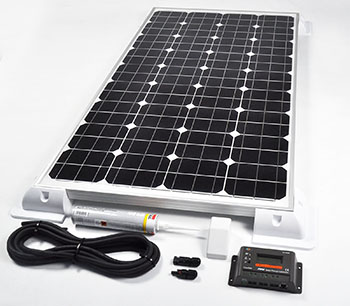
While the efficiency of them depends on where you are going and how much sun you get, a solar panel can help keep your leisure batteries topped up for extended trips away from the nourishing nectar of a 240V hook up. It requires more space on the roof of course. The best systems are ones that tilt up to face or even follow the sun. Having a panel that simply lays flat to the roof is a lot less efficient. If your travels are mainly in the UK and Scandinavia then a second leisure battery is probably a better value option.
7. Reversing Camera
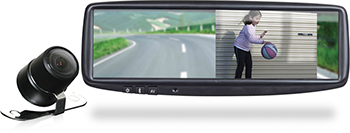 While a campervan is easy enough to manoeuvre, it’s a different kettle of fish when you have a 7m long motorhome and can’t see behind it. The solution is a reversing camera, ideally integrated into the rear view mirror or the multimedia dashboard so there aren’t any additional devices clogging up the windscreen. A basic reversing camera will simply show what’s right behind the motorhome while a more sophisticated system will either have a distance grid on it or have additional proximity sensors to warn when getting close to obstructions. Look for cameras with wide angle lenses or a twin-camera system for the best views of what’s behind.
While a campervan is easy enough to manoeuvre, it’s a different kettle of fish when you have a 7m long motorhome and can’t see behind it. The solution is a reversing camera, ideally integrated into the rear view mirror or the multimedia dashboard so there aren’t any additional devices clogging up the windscreen. A basic reversing camera will simply show what’s right behind the motorhome while a more sophisticated system will either have a distance grid on it or have additional proximity sensors to warn when getting close to obstructions. Look for cameras with wide angle lenses or a twin-camera system for the best views of what’s behind.
8. Mobile Internet
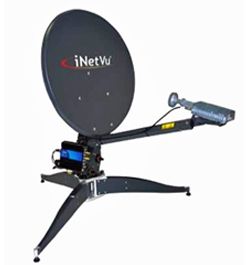 One of the best ways to get on the mobile internet is to park on a site that offers WiFi. Bear in mind that you and everyone else will be using it so there’s no guarantee that you’ll be able to stream from services like Netflix and Blinkbox. If the site only has WiFi from one point, like reception, then you will be unlikely to pick it up at the other end of the campsite. In this case a WiFi booster antennae may be useful. This increases the range at which you can pick up a signal and allows your devices to connect to it.
One of the best ways to get on the mobile internet is to park on a site that offers WiFi. Bear in mind that you and everyone else will be using it so there’s no guarantee that you’ll be able to stream from services like Netflix and Blinkbox. If the site only has WiFi from one point, like reception, then you will be unlikely to pick it up at the other end of the campsite. In this case a WiFi booster antennae may be useful. This increases the range at which you can pick up a signal and allows your devices to connect to it.
An alternative to this is to use a cellular data connection, either directly, or by sharing among your devices. Your tablet or phone, or dongle-equipped laptop, connects to the service using 3G or 4G. Many of your devices will then allow you to create a WiFi hotspot so that your other devices can connect to it to access the internet. This is what a MiFi device does. It uses a cellular 3G or 4G signal to connect to the internet – and you’ll need a data account again – and then transmits a WiFi signal around the motorhome for your devices to connect to.
If using your regular mobile phone connection you need to pay attention to usage limits and if overseas, roaming costs. You will still be able to connect to a partner mobile phone company’s signal, but the charges may be significantly more than at home. This applies to data usage from internet browsing as well. An alternative is to rent a special Sim for your device that comes with a set amount of data usages and time. Typical examples would be a 3Gb download limit over a 30 day period, after which the contract or bill or would have to be renewed for another set period of time.
A final alternative is to use satellite internet, which has implications for roof space and payload and is a more expensive option. But, if you’re heading for far flung places then it could be your only alternative.
9. Kitchen Gear
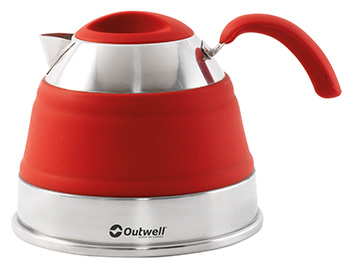 From pots and pans to plates and cutlery, if you intend to eat and drink in your mobile home then you will need utensils to cook and eat with. You can keep the payload impact down by choosing lightweight items and if pressed for space in a campervan, rather than having copious room in a full-size motorhome, then collapsible ones are even better.
From pots and pans to plates and cutlery, if you intend to eat and drink in your mobile home then you will need utensils to cook and eat with. You can keep the payload impact down by choosing lightweight items and if pressed for space in a campervan, rather than having copious room in a full-size motorhome, then collapsible ones are even better.
10. Awning
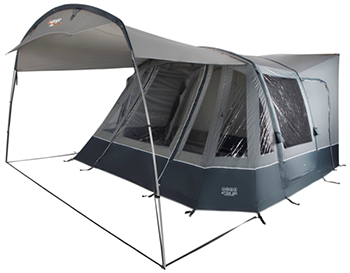 Everything about living in a motorhome is about managing space. The smaller the motorhome, the more critical this is which is why awnings are so popular. These can vary in size from something that is little more than a gazebo, offering a shaded area for sitting outside or storing bicycles, to the provision of extra rooms so that more people can come along on your motorhome trip and sleep in more comfort than trying to shoe-horn them inside the main ‘van. The smaller the motorhome, or campervan, the more useful an awning can be. There are two types of awning – the drive-away or the canopy awning. The drive-away version fixes to your awning rail but can be slipped off and remain as a tent-like contraption on your motorhome pitch while you drive off for the day. Getting lined back up and connecting it again tends to not be quite as easy. The alternative is the canopy awning which involves more work as it needs to be taken up and down, but offers a flexible space in that it can be used as a porch or fitted out to create an entire room.
Everything about living in a motorhome is about managing space. The smaller the motorhome, the more critical this is which is why awnings are so popular. These can vary in size from something that is little more than a gazebo, offering a shaded area for sitting outside or storing bicycles, to the provision of extra rooms so that more people can come along on your motorhome trip and sleep in more comfort than trying to shoe-horn them inside the main ‘van. The smaller the motorhome, or campervan, the more useful an awning can be. There are two types of awning – the drive-away or the canopy awning. The drive-away version fixes to your awning rail but can be slipped off and remain as a tent-like contraption on your motorhome pitch while you drive off for the day. Getting lined back up and connecting it again tends to not be quite as easy. The alternative is the canopy awning which involves more work as it needs to be taken up and down, but offers a flexible space in that it can be used as a porch or fitted out to create an entire room.
11. Portable Vacuum Cleaner
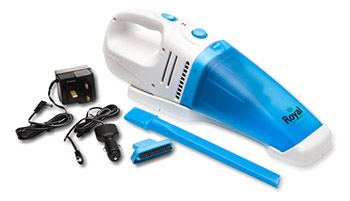 The more time you spend on the road in your motorhome, the more dirty it’s going to get. You need to keep it clean and the simplest way of doing this on the floorspace where the food crumbs end up is with a portable or hand-held vacuum cleaner. Anything larger takes up too much space and weight. Simply charge the vacuum cleaner when on hook-up and get the food and much up from the floor. Other cleaning essentials are things like bio-degrading chemicals for the cassette toilet to help it all decompose making it easier to flush down the waste services.
The more time you spend on the road in your motorhome, the more dirty it’s going to get. You need to keep it clean and the simplest way of doing this on the floorspace where the food crumbs end up is with a portable or hand-held vacuum cleaner. Anything larger takes up too much space and weight. Simply charge the vacuum cleaner when on hook-up and get the food and much up from the floor. Other cleaning essentials are things like bio-degrading chemicals for the cassette toilet to help it all decompose making it easier to flush down the waste services.
12. Alarm
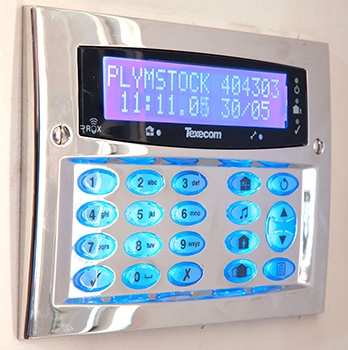 Having an alarm in the cab won’t help if someone breaks into the back of the motorhome. Almost every coachbuilt motorhome, under 3,500kg, uses plastic windows with caravan-style catches. These are easy to force open and break, because the plastic windows will flex. It means thieves can get in without breaking the window. Protect yourself by fitting window catches with locks and an internal alarm. One with a flashing light will highlight to would-be thieves that the interior is alarmed and will draw attention immediately.
Having an alarm in the cab won’t help if someone breaks into the back of the motorhome. Almost every coachbuilt motorhome, under 3,500kg, uses plastic windows with caravan-style catches. These are easy to force open and break, because the plastic windows will flex. It means thieves can get in without breaking the window. Protect yourself by fitting window catches with locks and an internal alarm. One with a flashing light will highlight to would-be thieves that the interior is alarmed and will draw attention immediately.
13. Outdoor Furniture
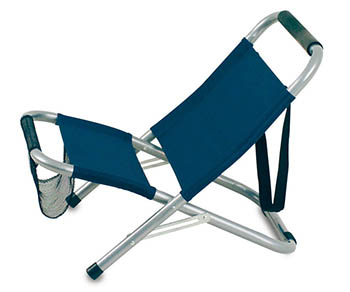 If it’s nice and sunny you don’t want to spend your time cooped up in the motorhome, but equally, if you want to put your feet up you might not want to go far. The smaller the motorhome, the more acute this becomes. The solution to the quandary is to take some lightweight, collapsible furniture. The key is to get something that weighs as little as possible and packs down as much as possible. That way you can have a couple of chairs and a table to sit around, while soaking up the sun.
If it’s nice and sunny you don’t want to spend your time cooped up in the motorhome, but equally, if you want to put your feet up you might not want to go far. The smaller the motorhome, the more acute this becomes. The solution to the quandary is to take some lightweight, collapsible furniture. The key is to get something that weighs as little as possible and packs down as much as possible. That way you can have a couple of chairs and a table to sit around, while soaking up the sun.
14. Bike Rack
 If you have an internal garage to store bicycles then that’s all good and well but if you don’t then the prospect of storing muddy or wet bikes inside is not a palatable one. Instead, add a bike rack to the back of the motorhome. There are some things to be aware of though. You don’t want to block any windows and the rack itself will add to the overall weight of the vehicle. Make sure you have the available payload for the rack and the bikes and on a related note, all bike racks have a weight limit, so don’t buy one until you know the combined weight of the ones you want to carry. If you have a very long overhang at the back then the extra weight may cause problems, especially on older motorhomes. Finally, make sure there’s some form of security for both the rack and the bikes stored on it so a casual thief can’t just lift the whole lot off.
If you have an internal garage to store bicycles then that’s all good and well but if you don’t then the prospect of storing muddy or wet bikes inside is not a palatable one. Instead, add a bike rack to the back of the motorhome. There are some things to be aware of though. You don’t want to block any windows and the rack itself will add to the overall weight of the vehicle. Make sure you have the available payload for the rack and the bikes and on a related note, all bike racks have a weight limit, so don’t buy one until you know the combined weight of the ones you want to carry. If you have a very long overhang at the back then the extra weight may cause problems, especially on older motorhomes. Finally, make sure there’s some form of security for both the rack and the bikes stored on it so a casual thief can’t just lift the whole lot off.
15. Electric Bicycle
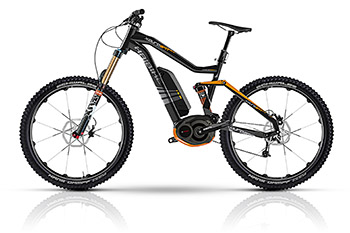 Since we’re talking about bicycles, the ultimate bike accessory is an electric one. Instead of struggling up those hills the electric motor can take the strain instead. You can either buy a kit to fit to an existing bicycle, or buy a complete one. An electric bicycle is formally known as an Electrically Assisted Pedal Cycle and must only have a maximum powered assistance speed of 15.5mph and a motor of 250W or less. There are a number of machines on sale in the UK with larger motors than this – they are basically considered as mopeds with all the rules and regulations that they incur. If caught riding one without all the correct documentation could be prosecuted for a range of offences.
Since we’re talking about bicycles, the ultimate bike accessory is an electric one. Instead of struggling up those hills the electric motor can take the strain instead. You can either buy a kit to fit to an existing bicycle, or buy a complete one. An electric bicycle is formally known as an Electrically Assisted Pedal Cycle and must only have a maximum powered assistance speed of 15.5mph and a motor of 250W or less. There are a number of machines on sale in the UK with larger motors than this – they are basically considered as mopeds with all the rules and regulations that they incur. If caught riding one without all the correct documentation could be prosecuted for a range of offences.
The standard for pedelecs, as they are known, in force across Europe is EN15194. All bicycles that have passed testing for this standard will have a certificate of compliance. Make sure any bicycle you buy has this. In the UK you must be over 14 years of age to ride one, but any age can ride one in Europe.
Browse Motorhome Accessory Companies
 |
 |
 |
 |








Recent Updates
Engine management lights: all you need to know
What is the engine management light? What does it mean, and what do I have to do? ...
Motorhome air suspension: all you need to know
Motorhomes are heavy and the additional weight of equipment and height of the bodywork can increase the loads ...
Motorhome WiFi: how to get better motorhome internet
Staying connected on the move is more and more essential, so relying on campsite WiFi isn't an option – here ...
A class of their own - our guide to A-class motorhomes
Thinking of trading up to an A-class, or even going straight to the top of the motorhome tree? We guide you ...
Explore overseas on a motorhome dream tour
Enjoy exotic travel in a campervan or motorhome by hiring, swapping with someone else or exporting your ...
Motorhome water systems: everything you need to know
On-board water is an important part of every motorhome – here’s everything you need to know ...
Campervanning in Europe: what you need to know
Whether you're planning a leisurely drive through the French countryside, navigating bustling city streets in ...
Campervan security: all you need to know
With thefts on the increase, it’s important to know how to keep your campervan secure and prevent campervan ...
Campervan furniture: everything you need to know
Our campervan experts guide you through all the essentials for your campervan, including tables, chairs, ...
Campervan finance: how to fund your purchase
Here we look at the different types of campervan finance available, to help you decide what’s the best option ...
Other Articles
Britain’s best used motorhomes
Want a great motorhome without paying the premium for a new one? Here's a guide to the best you can get in the pre-owned market for each layout, ...
Which motorhome? Choosing the perfect motorhome for you
Choosing a motorhome or campervan is one of the biggest buying decisions you’ll ever make, so it's important ...
Campervan washroom essentials: stay fresh on the road
Our guide will take you through the campervan washroom essentials you'll need so you're well-prepared for ...
Dogs in campervans: all you need to know
Follow our advice and your dog will enjoy campervanning as much as you do ...
Electric campervans: all you need to know
Our guide will take you through everything you need to know about electric campervans and what the future ...
Motorhome electrics: a complete guide to your motorhome electrical set-up
Motorhome electrics can dramatically enhance the convenience and comfort of your vehicle – but they can be ...
Lighting for campervans: all you need to know
We guide you through all the lighting options available for you and your campervan, including interior ...
Electric bikes for motorhomes: our ultimate guide
Read our comprehensive guide to electric bikes for motorhome owners, helping you add electric power to your ...
Our guide to 'cheap' motorhomes in 2024
If you're on the hunt for an affordable new motorhome, this is the best place to start – we've rounded up a ...
Campervans in winter: all you need to know
Here's your guide to preparing your campervan for the colder months, whether you will be using it or putting ...